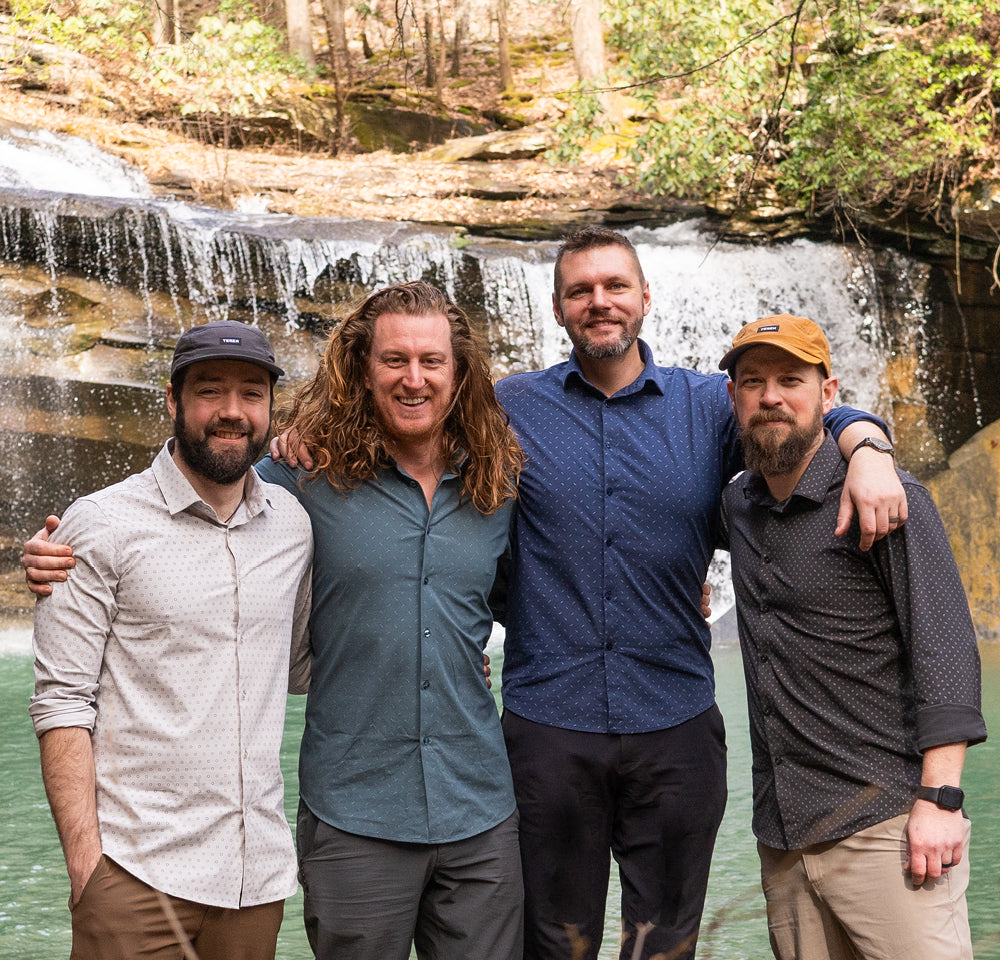As a kayaker, there are certain rivers that leave a mark on you forever. The Grand Canyon of the Stikine in northern British Columbia is one of those rivers. Often called The Everest of Rivers, it is fifty miles of massive whitewater and sheer canyon walls with only a short window each year when it can even be attempted. The river has a reputation that humbles everyone who sets eyes on it.
For me, paddling the Stikine was about more than rapids. It was a chance to celebrate a best friend’s bachelor trip in a way I will never forget, and it became a reminder of why we seek out challenges, how we grow from them, and why protecting wild places matters for the generations that follow.
By day I serve as Executive Director for the American Heart Association in Chattanooga and Georgia Communities, and outside of work I find energy in the outdoors. Kayaking has been part of my life for many years, and while I have been fortunate to paddle many rivers, the Stikine was by far the most demanding. It left me with lessons I will carry into every part of my life.
Preparation is Respect
The Stikine demands preparation through training, equipment, studying flows, and rehearsing rescues. And yet even the best preparation gets tested.
We completed the run in two days, just inside the short flow window. Overnight, while we camped in the canyon, and the river rose dramatically to flows I was personally not prepared for. Preparation had to meet adaptability.
That same principle applies to leadership. At the American Heart Association preparation shows respect for our mission and for the people who count on us. But circumstances shift, and leaders have to adapt while staying grounded in purpose.
And in both settings the right tools make all the difference. On the Stikine, that meant gear I could trust, including the clothing I lived in when the drysuit came off. Teren’s performance apparel let me pack light without compromise, durable enough for the wild, versatile enough for town, and dependable when I needed it most.
 Team Culture Saves Lives
Team Culture Saves Lives
A river like the Stikine makes teamwork non-negotiable. At one point, we had to portage a rapid for two hours along a cliff face where a single mistake would have had serious consequences. Calm communication, patience, and absolute trust in each other made the difference.
Our crew was a mix of longtime paddlers, close friends, and highly skilled kayakers including one teammate with more than twenty Stikine descents. His experience was invaluable, but what carried us was culture: mutual respect, humility, and trust.
It reinforced something I also see in nonprofit leadership. Outcomes rise and fall on whether you build a culture of trust and collaboration. Ego does not belong in a canyon, and it does not belong in organizations that want to thrive.
Adversity Builds Resilience
Every expedition has setbacks. On this one we faced travel delays, gear issues, and injuries. In the middle of the run I became sick while paddling some of the hardest rapids of my life.
Adversity forces the question: will we keep moving forward. Our team did. That resilience is the same muscle leaders build when goals feel out of reach or resources run thin. Adversity is often where growth happens, both in sport and in business.
Conservation is Urgency
What stayed with me most was not the rapids, but the place itself. Days in an untouched wilderness, cut off from the world, reminded me what is at stake if we do not protect it.
The outdoors does more than give us adventure. It provides perspective. It clears the noise and points us back to what matters. The Stikine deepened my belief that just as we work to protect the health of people, we also share a responsibility to protect the health of the natural world.
 Bringing It All Back
Bringing It All Back
The Stikine demanded everything we had: skill, humility, resilience, and teamwork. But it gave back more in return through lessons in leadership, culture, and purpose. At the heart of it, the trip was also about celebrating friendship and creating memories that will last a lifetime.
I came home with gratitude. Gratitude for the friends on the river, the support system at home that encouraged me, and the opportunity to carry these lessons into my work and my community. And I came home thankful for partners like Teren, who make it possible to move seamlessly between worlds, from a canyon in British Columbia to meetings in Chattanooga.
Closing Thought
The wild teaches lessons you cannot learn anywhere else. As leaders, our responsibility is to carry those lessons back into the world, building teams, organizations, and movements that are purpose driven, resilient, and as adaptable as the rivers we run.
- Bennett Smith






